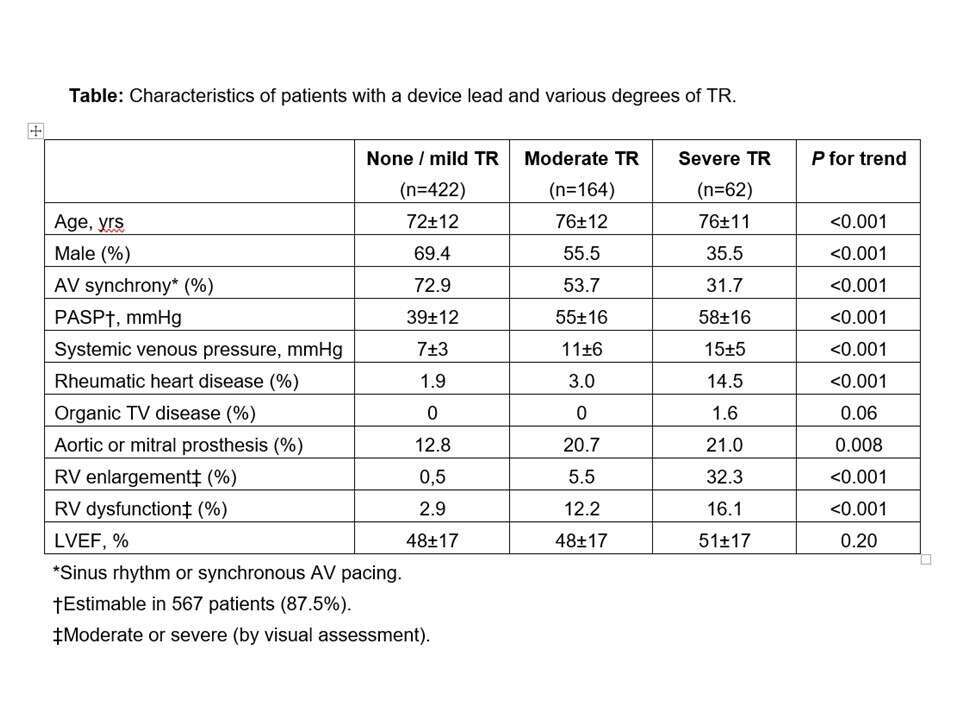
Risk Factors for Tricuspid Regurgitation in Patients with Implanted Device Leads
Background and Objectives: Device leads crossing the tricuspid valve (TV) (pacemaker or defibrillator leads) are currently recognized as an important cause of tricuspid regurgitation (TR). However, significant TR is evident in only a subgroup of patients with device leads and additional risk factors may play a role in the pathogenesis of TR in these patients. The objectives of our study were: 1) to determine the distribution of TR severity in patients with device leads; 2) to assess the risk factors associated with TR severity.
Methods: The transthoracic echocardiography reports of consecutive patients with device leads, who were examined at our institution during a 20 months period, were reviewed. The non-lead risk factors associated with TR severity were assessed.
Results: Of 683 patients with a device lead, 648 patients who hadn`t undergone previous tricuspid valve surgery were analyzed. None or mild TR was evident in 422 patients (65.1%), moderate TR in 164 (25.3%), and severe TR in 62 (9.6%). The Table compares the characteristics of patients with various degrees of TR.
Multiple non-lead risk factors for TR [advanced age, lack of mechanical atrio-ventricular (AV) synchrony (atrial fibrillation, ventricular pacing, complete AV block), elevated pulmonary artery systolic pressure (PASP), rheumatic heart disease], as well as female gender and previous aortic or mitral valve replacement were associated with increasing TR severity.
Conclusions: Multiple risk factors (age, gender, heart rhythm, PASP, organic non-TV valve disease) are associated with more severe TR in patients with device leads. These findings advocate that non-lead risk factors play a significant role in the pathogenesis of TR in these patients, in addition to the presence of the lead itself.
| Click the link to view image: | https://events.eventact.com/dan/29113/104228.jpg |

Powered by Eventact EMS